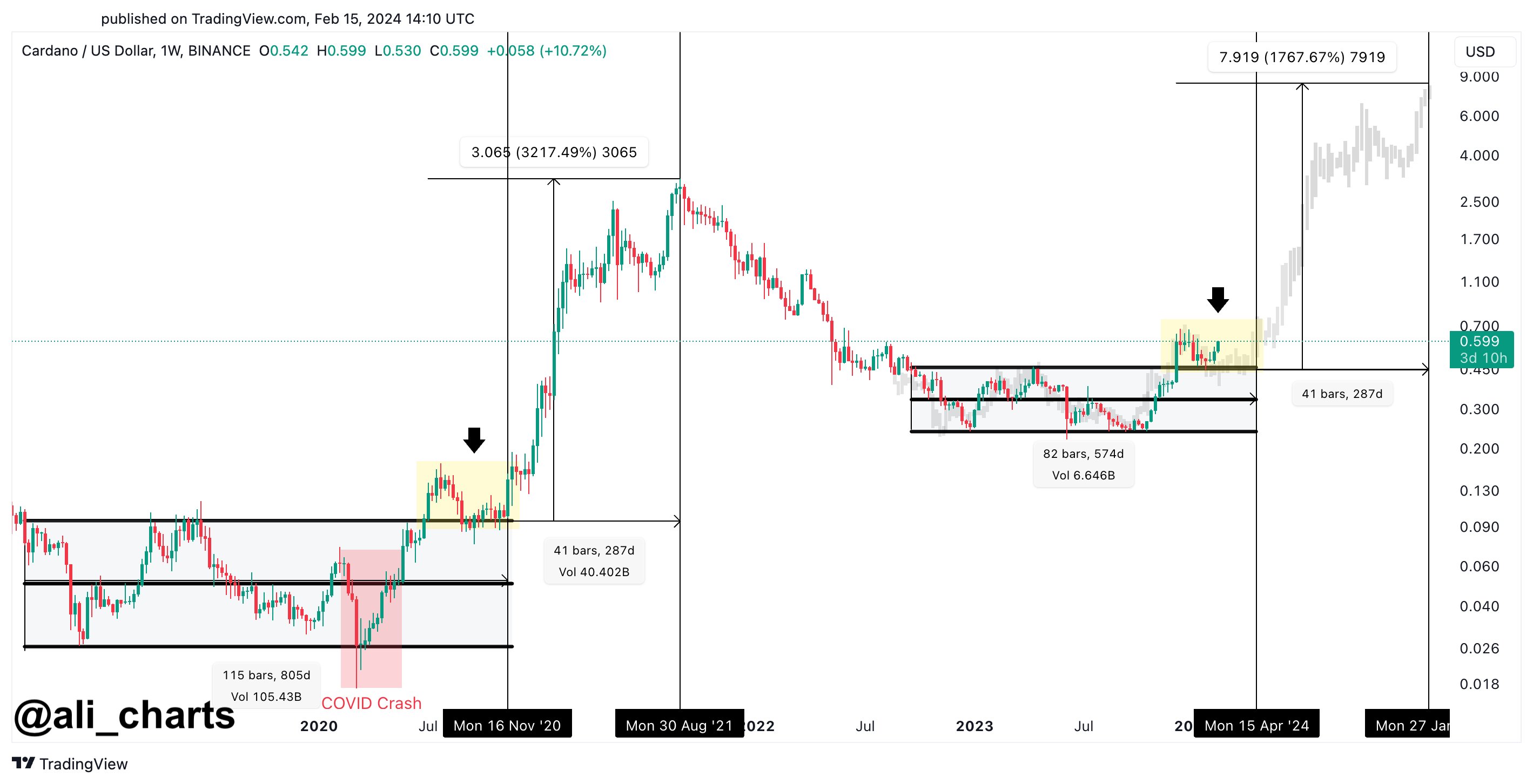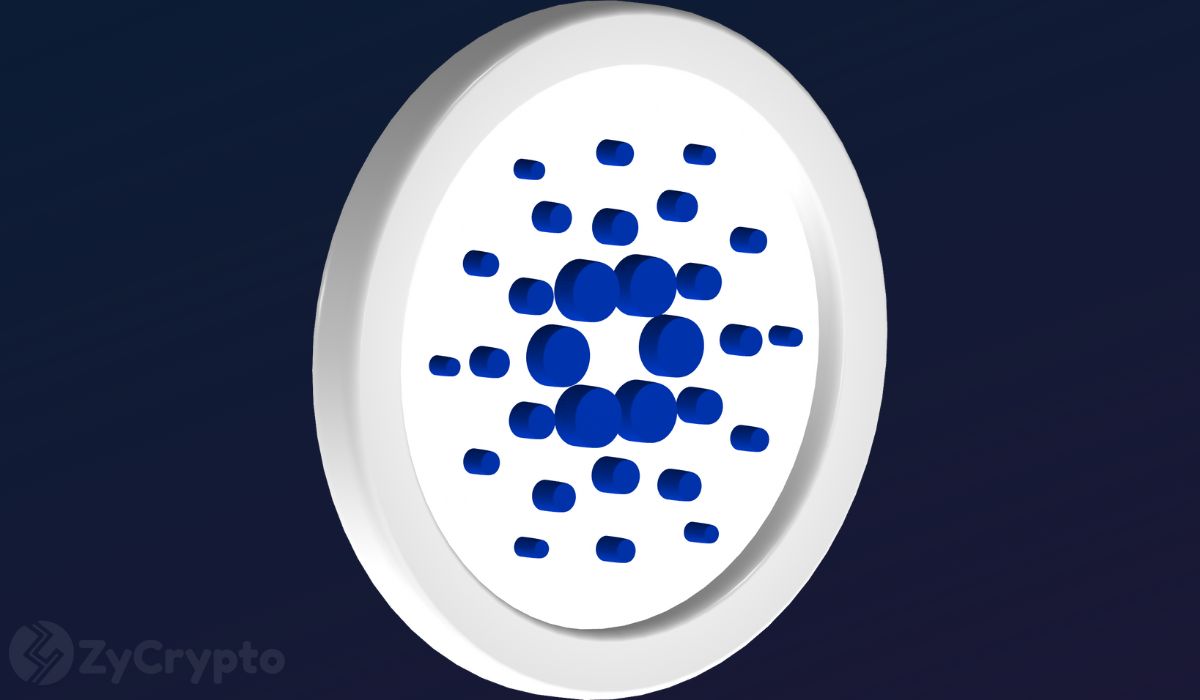
2024-10-19 07:07 |
This move has instilled renewed confidence in the market, with various digital assets, including Cardano, benefiting from the shift in economic policy. At the time of writing ADA is trading at $0.35 ADA/USDT on Gate.io
Beyond macroeconomic influences, a significant factor contributing to ADA’s upward momentum is the behavior of its short-term holders. Historically known for their tendency to sell during moments of volatility, these investors have exhibited an unexpected shift in attitude, opting to hold their coins instead of selling. This shift in sentiment is positioning ADA to break through a crucial resistance level of $0.50, which could mark the beginning of a more sustained upward trend.
As technical indicators signal a potential breakout, the market is closely watching Cardano’s performance, with many speculating that ADA could be gearing up for even larger gains. In this article, we’ll explore the driving forces behind ADA’s price action, the role of short-term investors, and what to expect from the altcoin as it nears critical resistance levels.
Cardano’s Short-Term Investors Show ConfidenceData from IntoTheBlock indicates a growing number of short-term ADA holders, specifically those who have kept their coins for under 30 days. Commonly referred to as “paper hands” due to their tendency to sell quickly during market fluctuations, these investors have been unexpectedly resilient lately.
Their newfound resolve suggests a shift in market sentiment toward Cardano, with fewer short-term investors choosing to sell during periods of uncertainty.
A key technical indicator, the Ichimoku Cloud, further backs this outlook. As ADA moves closer to surpassing its Leading Span A on the one-day chart, the altcoin is poised to overcome a resistance level that has caused selling pressure in recent months. Successfully breaking through this could signal stronger bullish momentum for Cardano, leading to increased buying activity and the potential for a continued upward trend.
ADA Price Outlook: $0.50 Within Reach?Cardano’s Relative Strength Index (RSI) is rising, currently sitting at 51.52, suggesting increased demand for the token. If ADA manages to breach the Leading Span A, it could aim for the next resistance level, Leading Span B. Overcoming this hurdle may propel Cardano toward a 32% gain, positioning its price at around $0.50. However, if buying pressure weakens and ADA fails to surpass the first resistance level, the price prediction could retreat to approximately $0.27 ADA/USDT. The strength of Cardano’s short-term holders and key technical indicators will play a critical role in determining whether ADA can break past $0.50 in the near term.
Cardano’s Long-Term Potential and Future DevelopmentsCardano’s long-term potential is anchored in its carefully structured development roadmap, which sets it apart from other blockchain projects. Built on a scientific foundation and peer-reviewed research, Cardano has taken a methodical approach to scaling, governance, and network functionality. This approach not only ensures that the system is robust and secure but also positions it as a blockchain that can evolve to meet the demands of future decentralized applications (dApps), financial services, and even traditional industries looking to leverage blockchain technology.
The Five Eras of Cardano: A Vision for the FutureCardano’s development is divided into five distinct eras, each designed to introduce new functionalities while maintaining the network’s integrity and decentralization. The eras—Byron, Shelley, Goguen, Basho, and Voltaire—are being rolled out progressively, with each focusing on a different aspect of the platform.
Byron (Foundation Era): The Byron era marked the initial launch of Cardano in 2017, focusing on building the foundational elements of the network. During this phase, Cardano introduced its native ADA token and implemented a secure proof-of-stake consensus mechanism. Although this phase primarily established the infrastructure, it laid the groundwork for the network’s subsequent innovations.
Shelley (Decentralization Era): The Shelley era focused on decentralizing the Cardano network, moving control from a centralized system to the broader community. With the introduction of staking, ADA holders could now participate in securing the network and earning rewards. As of today, over 70% of ADA’s circulating supply is staked, reflecting the strong community support and trust in the network’s future.
Goguen (Smart Contract Era): One of the most critical developments for Cardano was the Goguen era, which introduced smart contract functionality. This enabled developers to build dApps on Cardano, opening the door to decentralized finance (DeFi), non-fungible tokens (NFTs), and other blockchain-based innovations. The Alonzo upgrade, completed in 2021, was the major milestone of this era, positioning Cardano as a competitor to Ethereum and Solana in the smart contract space.
Basho (Scaling Era): The current stage of development, Basho, focuses on optimizing Cardano’s scalability and interoperability. With the growth of decentralized applications and increasing network activity, scaling is crucial to ensure that Cardano can handle higher transaction volumes without compromising speed or security. One of the key technologies being introduced is Hydra, a layer-2 scaling solution that could significantly increase the network’s throughput, potentially allowing it to process millions of transactions per second. Hydra works by creating multiple “heads” or off-chain channels, which operate independently while syncing periodically with the main blockchain. This not only reduces congestion on the main chain but also allows for faster and cheaper transactions.
Voltaire (Governance Era): The final era of Cardano’s roadmap is Voltaire, which focuses on full decentralization through a governance system that puts the future of the network directly into the hands of ADA holders. Under this model, Cardano will implement a treasury system that funds future development projects, all of which will be voted on by the community. This will make Cardano a self-sustaining ecosystem, where stakeholders can propose, vote on, and fund initiatives that align with the community’s vision for the network. The Voltaire era is expected to be a game-changer, as it moves Cardano from being a decentralized network to a fully community-driven system, with no reliance on any central authority.
In addition to its technical roadmap, Cardano’s potential is bolstered by a growing list of partnerships and real-world applications. Cardano’s parent organization, IOHK (Input Output Hong Kong), has prioritized partnerships that bring blockchain solutions to regions and industries that can benefit most from decentralized technology.
One of the most notable partnerships is with the Ethiopian government. Cardano has been working with Ethiopia’s Ministry of Education to develop a blockchain-based system that can track the educational progress of five million students across the country. This partnership underscores Cardano’s commitment to providing real-world solutions to complex problems, particularly in developing regions where trust and transparency in centralized systems are often lacking.
Cardano’s focus on social impact doesn’t end there. It has partnered with various organizations, including World Mobile, a decentralized wireless network aiming to provide affordable internet access to underserved populations. These initiatives showcase Cardano’s broader mission to create positive global change, positioning the network as more than just a tool for financial speculation.
Cardano’s Growing Ecosystem and Developer ActivityAs Cardano continues to roll out upgrades, its ecosystem is expanding rapidly. The launch of smart contracts has already led to an influx of developers building decentralized applications on the platform. Some of the early success stories include SundaeSwap, a decentralized exchange (DEX), and Meld, a DeFi platform offering crypto lending and borrowing services.
Cardano also boasts a vibrant NFT scene. While Ethereum has traditionally dominated the NFT space, Cardano is becoming an increasingly attractive alternative due to its lower transaction fees and energy efficiency. Projects like SpaceBudz and Clay Nation have gained significant attention, drawing NFT collectors to the platform.
Developer activity on Cardano is also on the rise. According to recent reports, Cardano ranks among the top blockchains for developer contributions, with a growing number of projects being built on its infrastructure. This increased development is crucial for the network’s future as a thriving ecosystem of dApps and DeFi platforms could significantly enhance ADA’s value proposition.
The Road Ahead for ADA and the Cardano EcosystemAs Cardano continues its transition through the Voltaire era, its long-term success will likely depend on its ability to scale and attract more developers and users to its platform. With innovations like Hydra on the horizon and a commitment to improving governance and decentralization, Cardano is well-positioned to compete with other leading blockchain platforms.
Investors are keeping a close eye on upcoming milestones, as successful implementation of its roadmap could lead to sustained growth for ADA. Moreover, Cardano’s focus on real-world use cases and partnerships in developing countries suggests that its potential extends far beyond the speculative nature of the cryptocurrency market.
Cardano’s methodical development, growing ecosystem, and commitment to social impact make it a unique player in the blockchain space. While challenges remain, particularly in the competitive landscape, Cardano’s long-term vision and focus on scalability, governance, and utility give it a strong foundation for future growth.
origin »Cardano (ADA) на Currencies.ru
|
|




